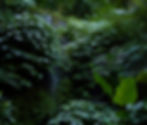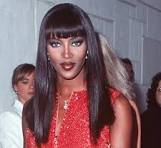Title: "From Cleopatra to K-Pop: A Deep Dive into the Evolution of Hair Bangs"
- Belliard’s
- May 28, 2024
- 3 min read
Updated: Apr 16

When it comes to hairstyle trends, few have stood the test of time quite like bangs. This versatile and stylish hair feature has adorned the faces of countless individuals across centuries and continents. At Belliard's Salon & Spa, we appreciate the timeless appeal of bangs and their transformative power. In this blog post, let's delve into the origin of the word "bangs," explore what they're called in different countries, and uncover why people started incorporating bangs into their hairstyles.
The Origin of the Word "Bangs"
The term "bangs" has an interesting etymology rooted in equestrian terminology. It derives from the word "bangtail," which refers to the tail of a horse that is cut straight across, giving it a blunt, even look. This term was adapted to describe a similar blunt cut in human hair, typically falling straight across the forehead. The word "bangs" first came into popular usage in the United States during the late 19th century.
What Bangs Are Called Around the World
While "bangs" is the term commonly used in the United States, other countries have their own names for this popular hairstyle feature. Here’s a quick look at how different cultures refer to bangs:
United Kingdom: In the UK, bangs are commonly referred to as a "fringe." This term is also used in many other English-speaking countries, including Australia and New Zealand.
France: In French, bangs are called "la frange."
Spain: In Spanish-speaking countries, they are known as "el flequillo."
Germany: In Germany, bangs are called "der Pony."
Italy: In Italy, they are referred to as "la frangia."
Japan: In Japan, bangs are commonly called "前髪" (maegami), which directly translates to "fore-hair."
Why Did People Start Cutting Bangs?
The practice of cutting bangs has a rich history, dating back to ancient times. Here are a few reasons why bangs have remained a popular hairstyle choice throughout history:
Cultural Significance:
Ancient Egypt: Egyptians, both men and women, often wore wigs with bangs to signify their social status and maintain cleanliness in the harsh desert climate.
Medieval Europe: During the medieval period, bangs were popular among the nobility as a way to showcase their high social status and fashion-forward thinking.
Practicality and Comfort:
Vision and Sweat Control: In hot climates, bangs help keep sweat from dripping into the eyes, making them practical in regions with warm weather.
Ease of Maintenance: Bangs are relatively easy to cut and maintain, making them accessible across different economic classes.
Fashion and Aesthetics:
Face-Framing Effect: Bangs can enhance facial features and create a youthful appearance, complementing various face shapes and hair types.
Fashion Trends: Throughout history, bangs have evolved to match contemporary aesthetics, from the blunt bangs of the 1920s flapper era to the shaggy, wispy styles of the 1970s.
The Modern Appeal of Bangs
Today, bangs are as popular as ever, with countless variations to suit every individual style. Whether you prefer blunt, straight-across bangs, soft, side-swept fringes, or edgy, choppy styles, there's a bang look for everyone. At Belliard's Salon & Spa, we specialize in creating customized hairstyles that bring out the best in our clients, and bangs are often a key part of these transformations.
In conclusion, bangs have a fascinating history and a universal appeal that transcends cultural boundaries. Whether you're looking to make a bold fashion statement or simply want a fresh new look, bangs are a timeless choice that can elevate any hairstyle. Visit us at Belliard's to discover the perfect bang style for you and experience the magic of this enduring hair trend. #HairstyleHistory #Fringe #HairInspiration #HairFashion #BeautyTrends #HairGoals #TimelessStyle #HairTransformation #GlobalFashion #CulturalBeauty #FashionEvolution #HairSalon



















